Table of Contents
- Product Overview
- The Spinner Overlay Collection
- Pre-cut Stickers
- Supplemental Cards
- Instructions for Use
- References
Acknowledgements
The following field testers and their student learners provided valuable time and input during the development of this product: Wendy Dixon Barber, Patrice Bucheli, Liz Eagen Satter, Sara Edwards, Debra Fenton, Dana Guthrie, Linda Kraft, Ellen Mazel, DeJean Miller Melton, Mariesa Mills, Lynn Pensari, Amanda Perry, Yue-Ting Siu, Lori Spenser, and Sharon Woods.
Warning
The use of this product can simulate flashing lights. Adults supervising learners prone to seizures brought on by flashing lights are advised to use this product with caution.
Product Overview
The Spinner Overlays for the Light Box collection is designed to support the individual needs of learners diagnosed with Cortical Visual Impairment (CVI) or low vision. Using color, light, movement, and increasing levels of complexity, the overlays can be adapted and layered for many different purposes.
Use the following APH products with the overlay and sticker collection:
- Light Box; catalog number 1-08669-00
- Mini-Lite Box; catalog number 1-08661-00
- Plexiglas® Spinner; catalog number 1-08664-00
- Light Box Materials: Level 1; catalog number 1-08670-00
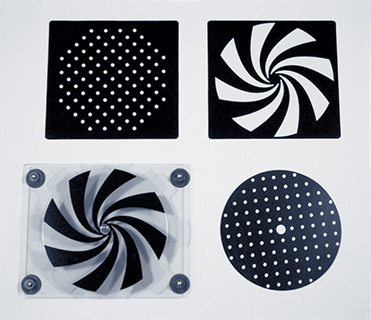
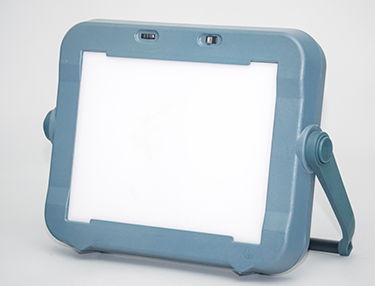
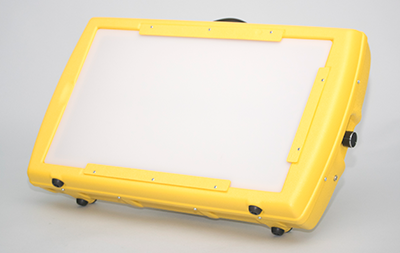
The Spinner Overlay Collection
Five each of
- transparent red
- transparent yellow
- clear
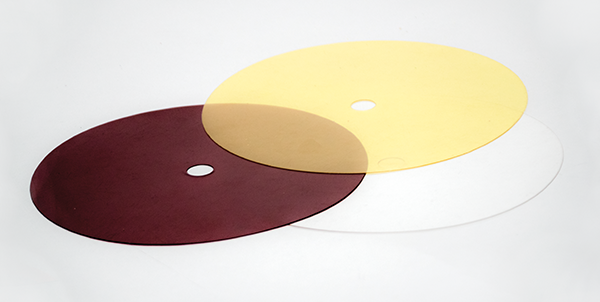
Two each of
- transparent green
- transparent blue
- transparent orange
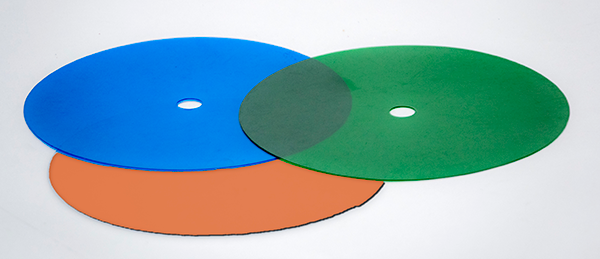
One each of
- multicolor stripe pattern
- multicolor dot pattern
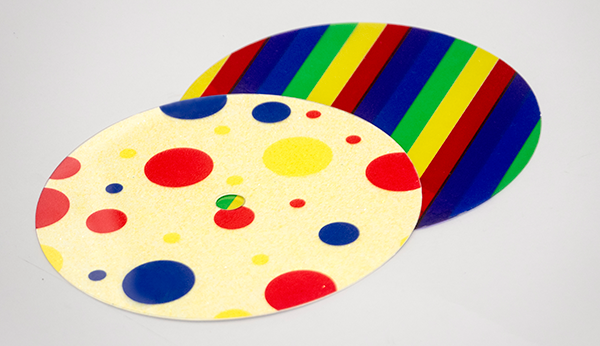
One each of
- purple heart pattern
- pink heart pattern
- red heart pattern
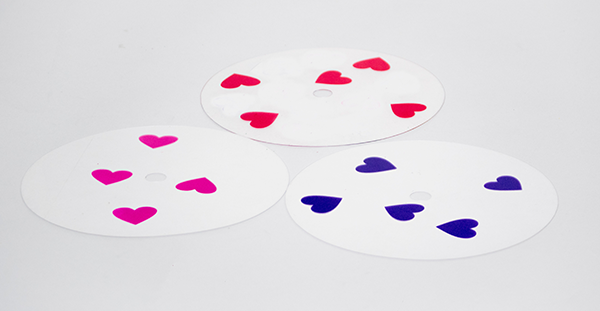
One each of
- large green shamrock pattern
- small green shamrock pattern
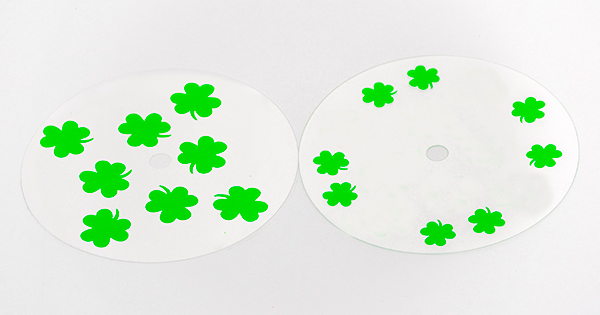
One each of
- yellow star pattern
- red star pattern
- blue star pattern

One each of
- sparkle blue
- sparkle red
- sparkle green
- sparkle yellow
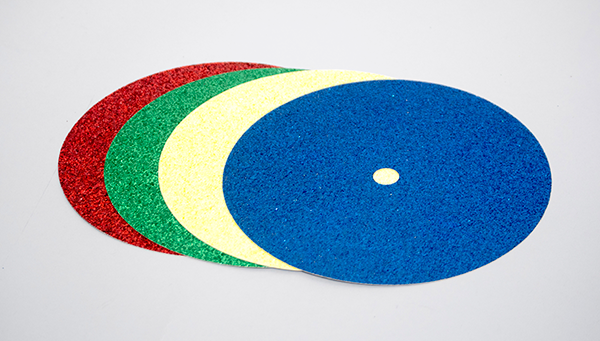
One each of
- holographic blue
- holographic red
- holographic green
- holographic yellow
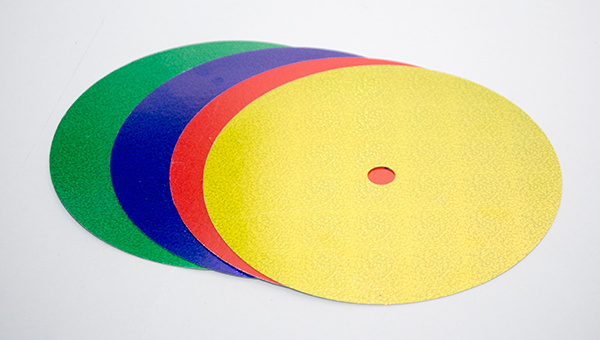
A few thoughts regarding the spinner overlays:
- To let light shine through opaque card stock and paper overlays, punch or cut a pattern of holes as needed.
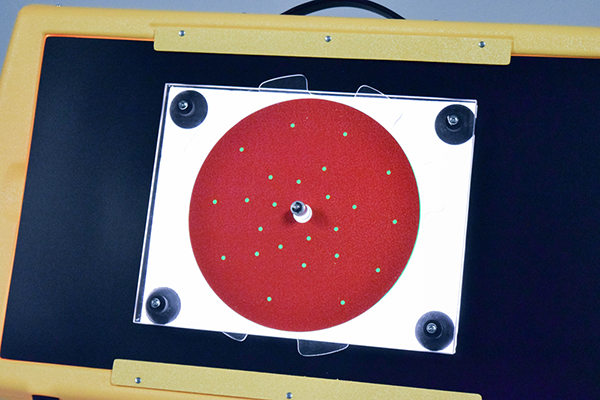
- To achieve the best “sparkle” results, shine a flashlight onto sparkle and holographic spinners from behind a learner facing the Light Box.

- Place one or more stickers along the edge of the spinner to help learners locate where to initiate movement.

Pre-cut Stickers
Customize the overlays by creating patterns with the pre-cut stickers from the collection or with commercially available stickers.
The collection includes 12 each of small size stickers and three each of large size stickers in blue, red, green, and yellow holographic adhesive paper:
- Circles
- Triangles
- Plus signs
- Stars
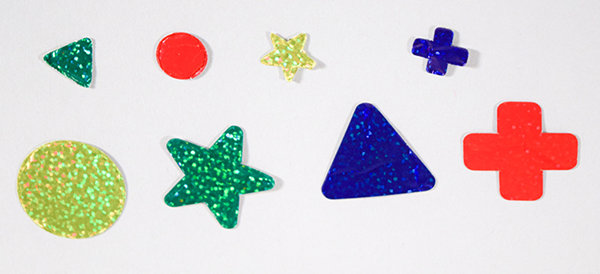
The collection includes 12 8.5-by-0.875 in. strips in blue, red, green, and yellow holographic adhesive paper.
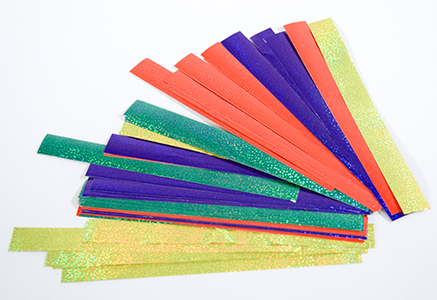
The collection includes eight 8-by-0.25 in. strips in blue, red, green, and yellow holographic adhesive paper.
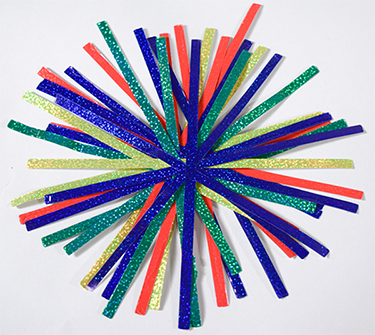
Supplemental Cards
The collection comes with eight blank cards to use for customized target images and one card of each of the following:
- Purple heart
- Pink heart
- Red heart
- Large green shamrock
- Small green shamrock
- Red star
- Blue star
- Yellow star

Instructions for Use
CVI is a neurological visual disorder suspected by
- a normal or close to normal eye examination that does not explain visual performance;
- a medical history which typically includes neurological problems; and
- the presence of unique visual and behavioral characteristics.
The degree of CVI can range from mild (typically developing child with limited atypical visual behaviors) to severe (multiple disabilities with many atypical visual behaviors). The degree of neurological damage and CVI depends upon the time of onset, as well as the location and intensity of the damage. It is a condition that indicates that the visual systems of the brain do not consistently interpret or understand what the eyes see. The presence of CVI is not an indicator of the child’s cognitive ability. To read more about the unique visual behaviors associated with CVI, visit the APH CVI Web site.
Learners diagnosed with CVI are challenged in understanding objects and concepts through use of their vision. Materials and environments may need to be adapted for learners in order for them to be successful. The Spinner Overlays for the Light Box are unique in that the parent or teacher may design individualized overlays for each learner. Learners who demonstrate many CVI characteristics generally need a simpler design than learners who demonstrate few atypical visual behaviors. The strategies below build upon the learner’s strengths and assist a parent or teacher in understanding which materials a learner is attracted to and motivated by.
For learners who demonstrate many CVI behaviors, use simple, non-complex materials. Choose single-colored visual targets from the collection of spinner overlays. Use a color that the learner prefers, as indicated by parent report or assessment. Place materials in the learner’s favored visual field. After attaching the Plexiglas® Spinner to the Light Box, place the Spinner Overlay on top via the center hole.
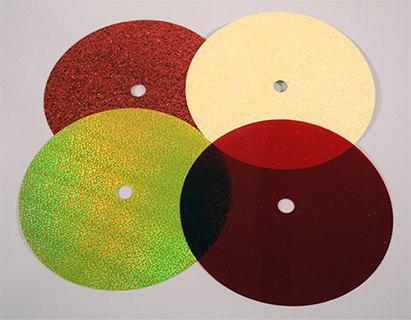
Place the rectangular blackout sheet from the Level 1 Light Box Materials around the spinner on the Light Box to help eliminate excess white light and focus attention on the spinner.
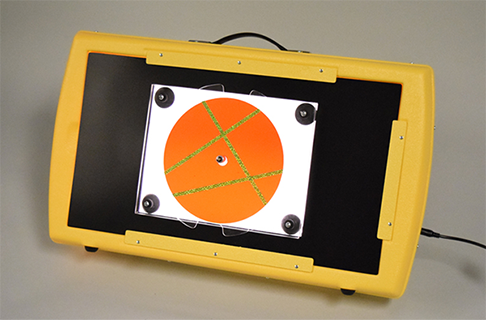
Consider the environment where you work with the learner. Eliminate visual complexity in the workspace by placing an APH Invisiboard behind the Light Box. Remove distracting sounds and scents that may interfere with the learner’s use of “best vision.”
Describe the visual characteristics of the target to the learner and provide movement by turning the spinner. Ask the learner to “look for the red spinner” and then wait for the learner to respond. Responses may vary from a subtle “stilling” of the learner to an actual head turn toward the target. The learner may require “wait time,” so be patient for the reaction. After the learner loses visual interest or fatigues, provide a visual break. Take note of the color of the target, the number of times the learner was able to regard the target, how long you waited for a reaction, and the environment in which you worked. Share your observations with the educational team to facilitate building additional activities from this baseline information.
Once a learner has developed a visual curiosity for the overlays, encourage him to reach toward the target to make something happen. Provide opportunities for the learner to combine look, touch, and reach to initiate movement of the spinner.
When the learner demonstrates consistent success, reassess to determine if he can attend to more complex targets.
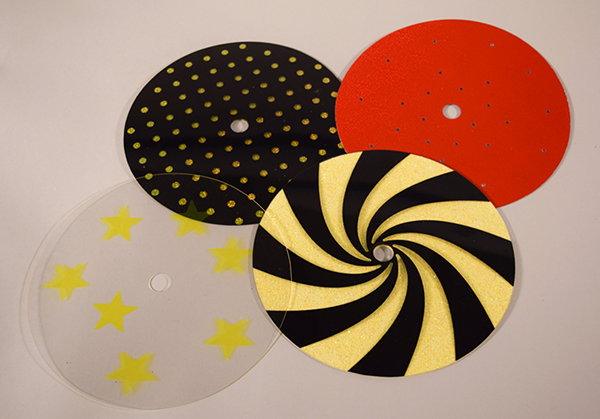
Follow his lead to create new combinations of overlays and stickers to initiate the look‐touch‐interact sequence. As each level of success is achieved, reexamine the workspace to determine the level of environmental complexity tolerated by the learner.
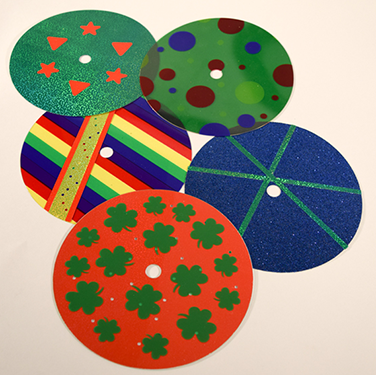
Be sure to update the learner’s educational team as these factors are determined. This information will help to guide accommodations made throughout the learner’s entire day, when working independently or with his team.
As the learner increases his understanding of two-dimensional materials, use the Supplemental Cards to encourage visual discrimination between same and different, to visually recognize a named object, or to encourage a visually guided reach to a target presented on a complex background. Two spinners displayed next to each other on one Light Box is a way to create activities of comparison for color, shape, or size.
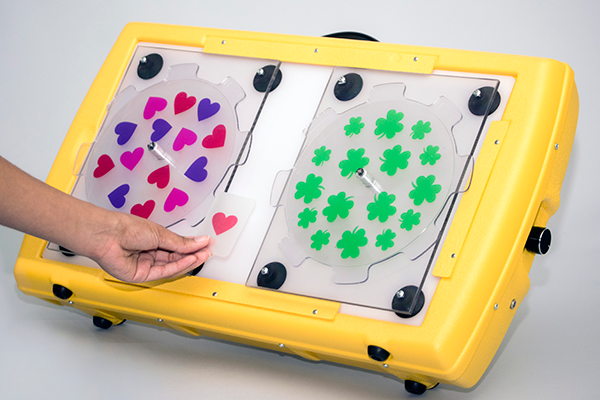
References
Jan, J. E., Groenveld, M., Sykanda, A. M., & Hoyt, C. S. (1987). Behavioural characteristics of children with permanent cortical visual impairment. Developmental Medicine and Child Neurology, 29, 571-576.
Lueck, A. H., & Dutton, G. N. (Eds.). (2015). Vision and the brain: Understanding cerebral visual impairment in children. New York, NY: AFB Press.
Roman-Lantzy, C. (2007). Cortical visual impairment: An approach to assessment and intervention. New York, NY: AFB Press.

